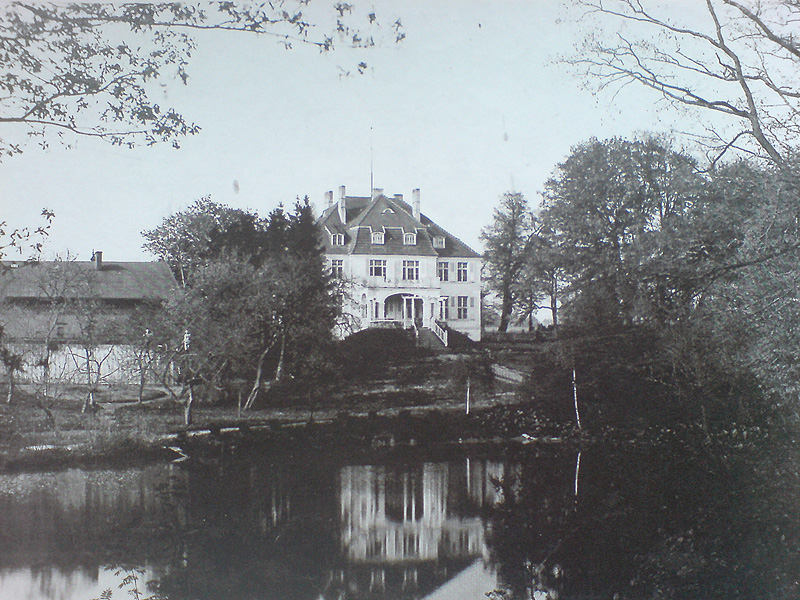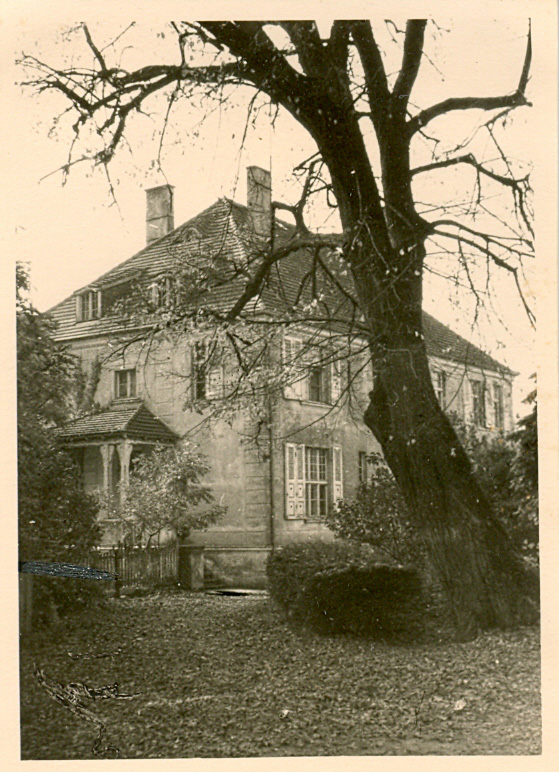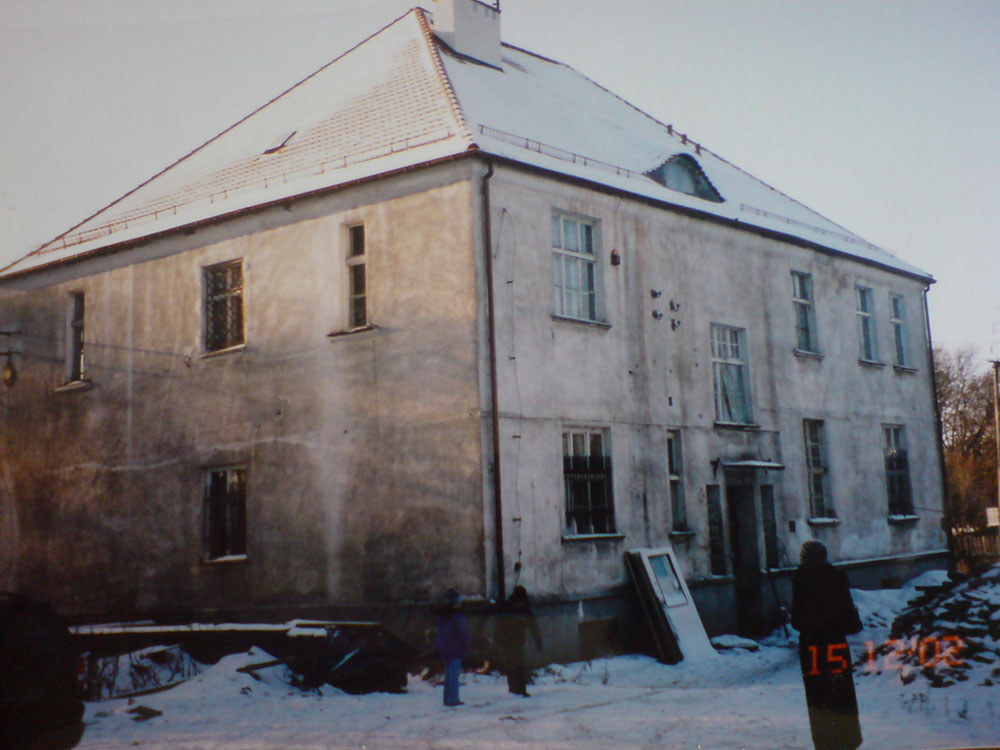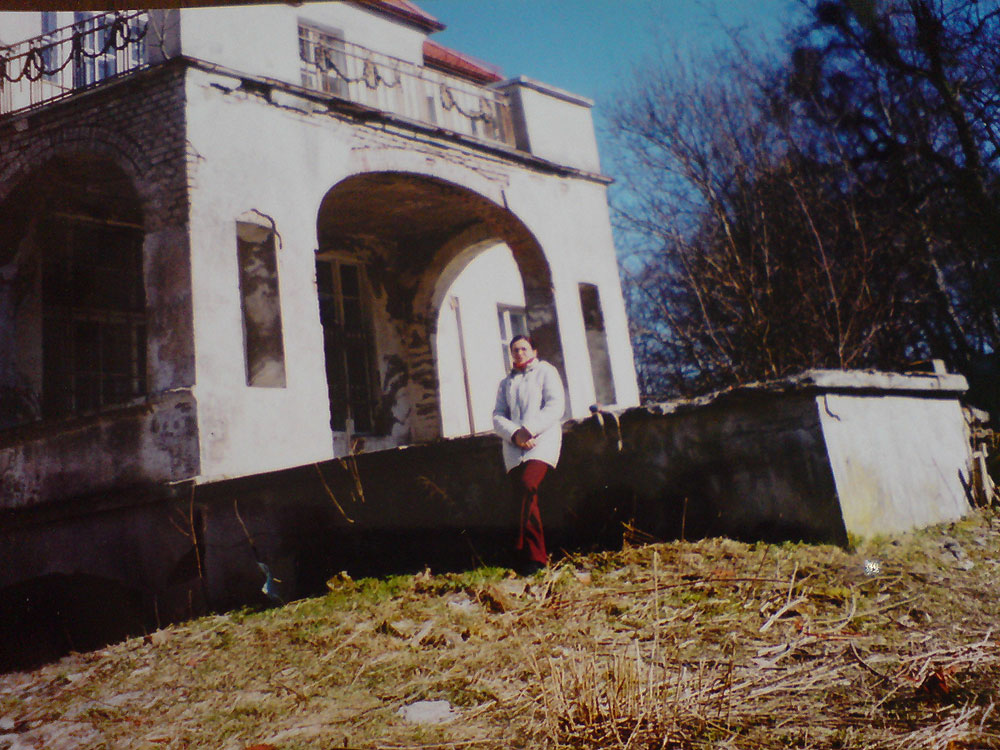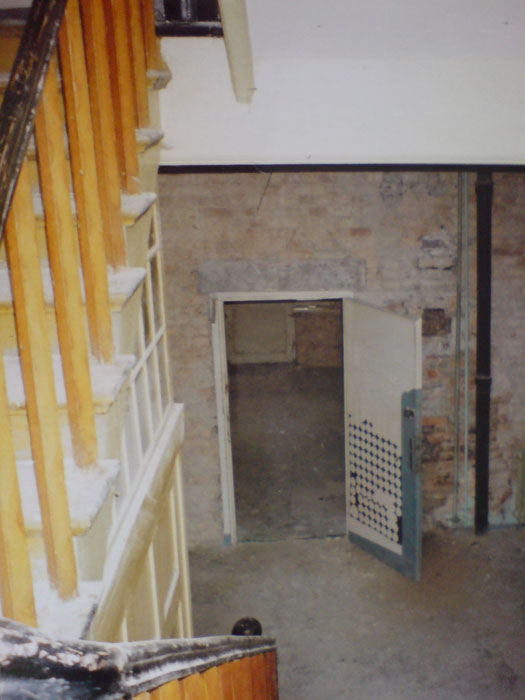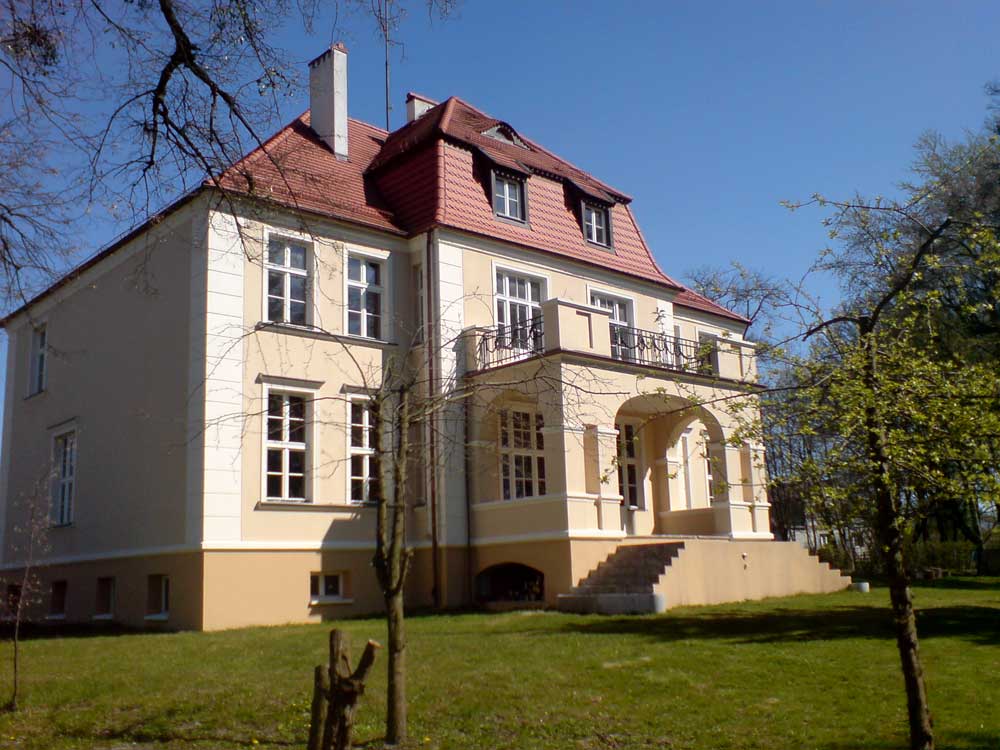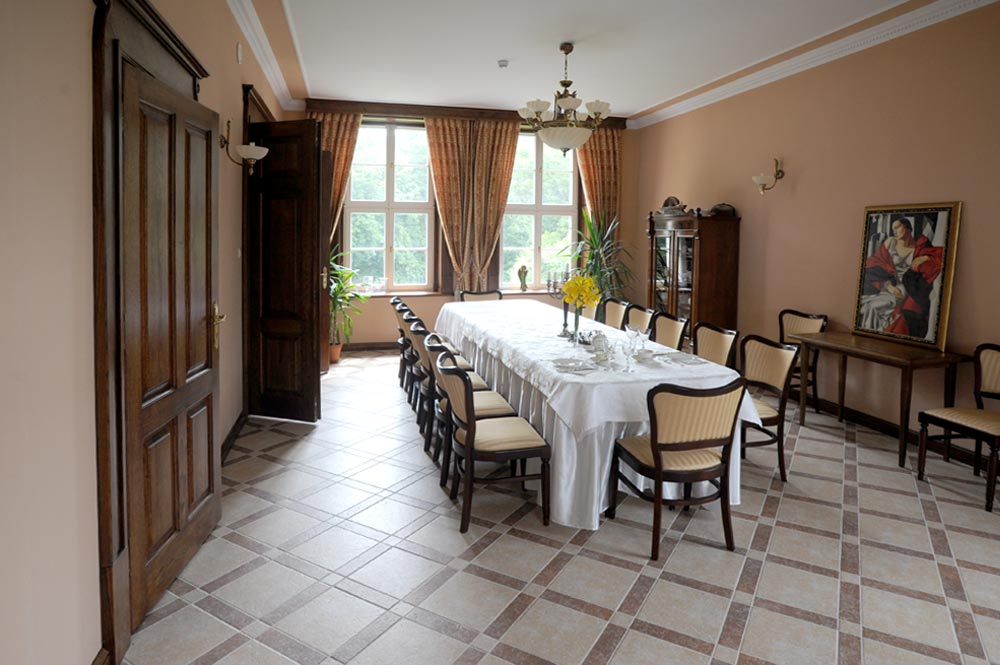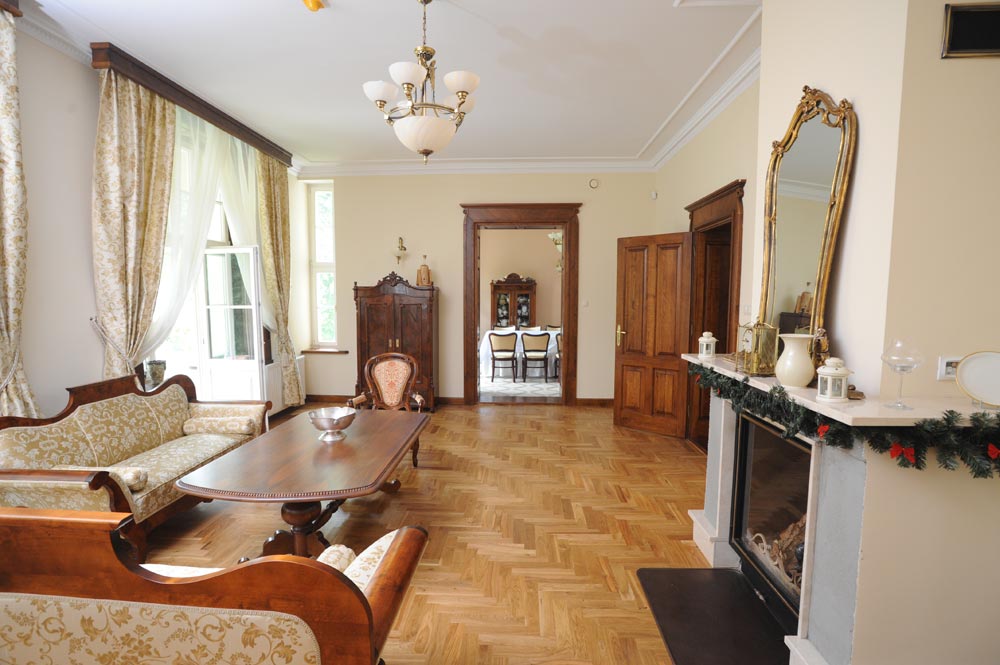
Dwór Bieland - history
The history of the manor house Bieland dates back to the Middle Ages and the Teutonic Order's rule.In the 14th century , there was a village called Steinbeck, founded and owned by the Old City Council of Elbląg (Elbing) ,with an area of 22 Lahn (360 hectares). The members of the City Council were given the right to control and administer the village in recognition for their contribution to the local community.They were granted all privilages that the freeholders enjoyed; they were eligible to collect rents, they appointed the members of the Court of Justice and issued licences to run inns, mills etc. Thanks to such rights and privilages, the councillors quickly grew rich.. In the tax books dating back to the year 1420, the list of freeholders includes Nickel Sonnau, Hans Röver and Heinrich Bieland. Hans Röver became the Mayor of Elbląg in 1464 and Heinrich Bieland was appointed in the year 1468.The whole property is named after Bieland,the mayor who finally became the only owner of the possession. The property was still owned by Bieland when this area came under the reign of Poland
A short time after the Thirteen Years' War was over in 1466, Heinrich Bieland presented the estate to St Brigid's Convent in Elbląg. When the convent was relocated to Gdańsk, the City Council in Elbląg took over the property again (it was now called Stadgut), which led to a conflict between St Brigid's Convent in Gdańsk and the City Council in Elbląg. It was not until the year 1531 that the conflict was appeased due to the compensations approved by the Royal Court. The Convent was entitled to a 400 mark compensation from Elbląg, which took possession of the Convent's property including the lands within the Bieland Manor.
The City Council once again leased out the property which was also referred to as Stadthof. In the year 1568, it was called Bielandshof and its area was only 4 Lahn (66 hectares), which means that the village of Steinbeck, with its area of 22 Lahn (360 hectares), had been divided into a few properties including the Bieland Manor.In 1570, the City Council granted the Bieland Manor to Sewald Wartenberg, the Mayor and named it Wartenbersghof after his surname. In the year 1568, the Mayor Sewald Wartenberg was in the possession of another, neighbouring estate with an area of 7 Lahn (115 hectares). In those days, a newly coined term, freie Burgerhofe (bourgeois private properties) came into being. The term applied to municipal lands which, as a matter of fact, belonged to the local councillors, who were exempt from paying the property rent, and so they quickly grew rich.
In the year 1595, Stanisław Makowiecki, the first parish priest of St Nicholas Church tries hard to give the Church the right to own the property after Wartenberg's death, but to no avail. The estate remains in the possession of the city and is divided into Groß (Large) and Klein (Small) Bieland. Contrary to the name, the Groß Bieland occupies an area of only 4 Lahn (66 hectares) whereas the Klein Bieland reaches 6 Lahn (99 hectares)!!!.At the beginning , both properties were of the same size.The smaller property was probably called ''Large''thanks to the fact that the manor was regarded as the ancestral property and all possessions were stored here. In the middle of the 17th century, the Jakobsons, a patrician family became the new owners of the property, which became known as Jakobsonshof . In the middle of the 18th century, the land is cut up and co-owned by Professor Hennig,Gottfried Hechtm, a merchant and Christopher Ritter. It is from that period that the first written record of the Manor Court comes. The widow of Gottfrid Hecht renovated and enlarged the old building that was probably constructed by the Jakobsons.Mr Ritter built a new stable at the other side of the road and another manorial court at the edge of the forest. The third manorial court was not completed and it was finally removed by Professor Hennig.
After Christopher Ritter's death in 1787, his widow married Johann Heinrich Wegmann, a city councillor. Now, for a longer period of time, the property was being called Wegmannshof. In the year 1788, half of the property was purchased by the merchant called Jakob Schroeter whereas the other half was bought by Johann Friedrich Friese. They paid 3,745 Thalers for the whole estate.
The half owned by Friedrich, worth 1,666 Thalers was inherited in 1818 by his son Friedrich Wilhelm who later became a member of the City Council.
The other half, owned by Schroeter, was purchased for 800 Thalers by his widow Florentine Christine in .in 1925. On her death in 1830, this part of the property was inherited by her son Jakob Ferdinand Schroeter.
The part that was owned by Friese, was purchased for 4666 Thalers by August Silber, a City Councillor in 1831. In the year 1832, it was once again bought for the same price by Schroeter, who put all property belonging to Groß Bieland under control.
In the year 1837, Friedrich Wilhelm Friese,a City Councillor and List, the Lord Mayor of Królewiec become the co-owners of Bieland due to the inheritance process.Then, in 1838, Friese buys List's share for 1,000 Thalers thus becoming the only owner of the property.
In the year 1842, the property was purchased for 4,924 Thalers by Pankrath's cantor.Another transaction was much larger than that.In the year 1964, Lieutenant Anton von Wernsdorff pays as much as 30,000 Thalers!!! That was probably caused by a considerable extension of the modern farm.In the year 1908, the property Gross Bieland is still in the possession of the Wersndorffs and its legal owner is Colonel Georg von Wernsdorff. In the same year, the manor undergoes a thorough reconstruction, giving the building its present form.
The last pre-war owner of the property until the year 1945 was Arnold Wunderlich,a merchant and a gentryman who purchased the property in 1911.From the year 1934, the estate was managed by his son, Walther Wunderlich.From the address books dating back to the 1930s and 1940s, we now know that the estate Gross Bieland belonged to the Wunderlich family and formed a whole with the neighbouring estate called Roland (Rodeland).The whole property occupied an area of 161 hectares, including 106 hectares of plough-land, 3 meadows, 15 pastures, 6 forests, 31 roads, waters, a park and buildings.
The manor house was not destroyed during the Second World War. After the year 1945, the land was given away to the Multi-branch Farm Company, and the State Farm(PGR) Bielany Wielkie was soon formed.The manor house was occupied by the company headquarters.In the 1960s, the building was adapted for use as flats and offices and, consequently, it lost all the qualities of a stylish manor house. The metal elements, moulds, corner panels and window moulding were hammered down.The rooms were subdivided, the historic stoves were removed and all the wooden doors were replaced by the panelled ones.
Towards the end of the 1990s, the building had to be abandoned due to inadequate technical standards resulting from lack of proper maintenance and repair works, and it almost fell into dilapidation.
Thanks to the intervention of the Provincial Department of the Conservation of Historical Monuments in 2001, the manor house with its surrounding park were privatized and the whole estate underwent extensive renovations and conservatory works.As a consequence,unlike many similar buildings, it did not fall into complete dilapidation.
